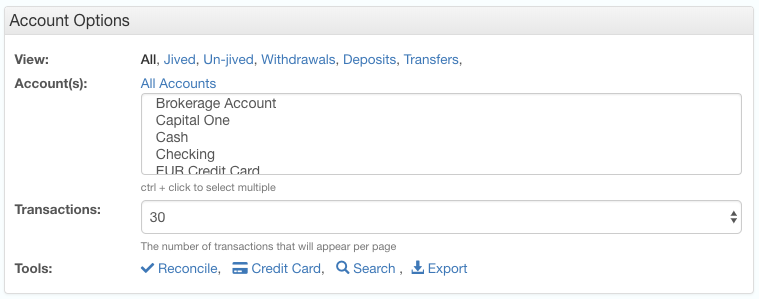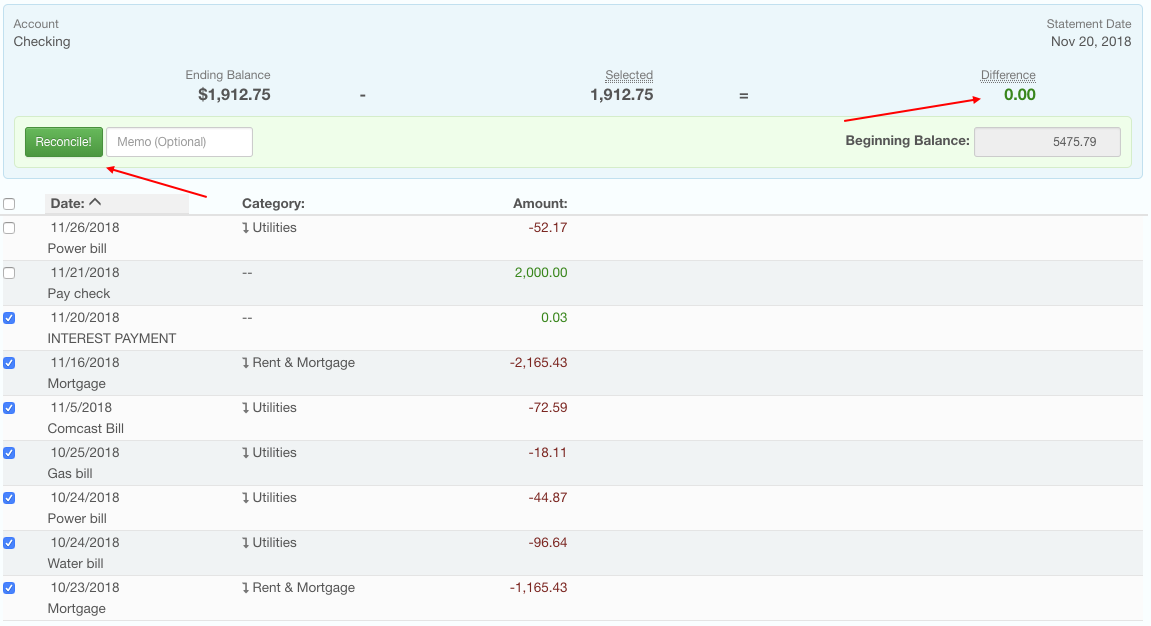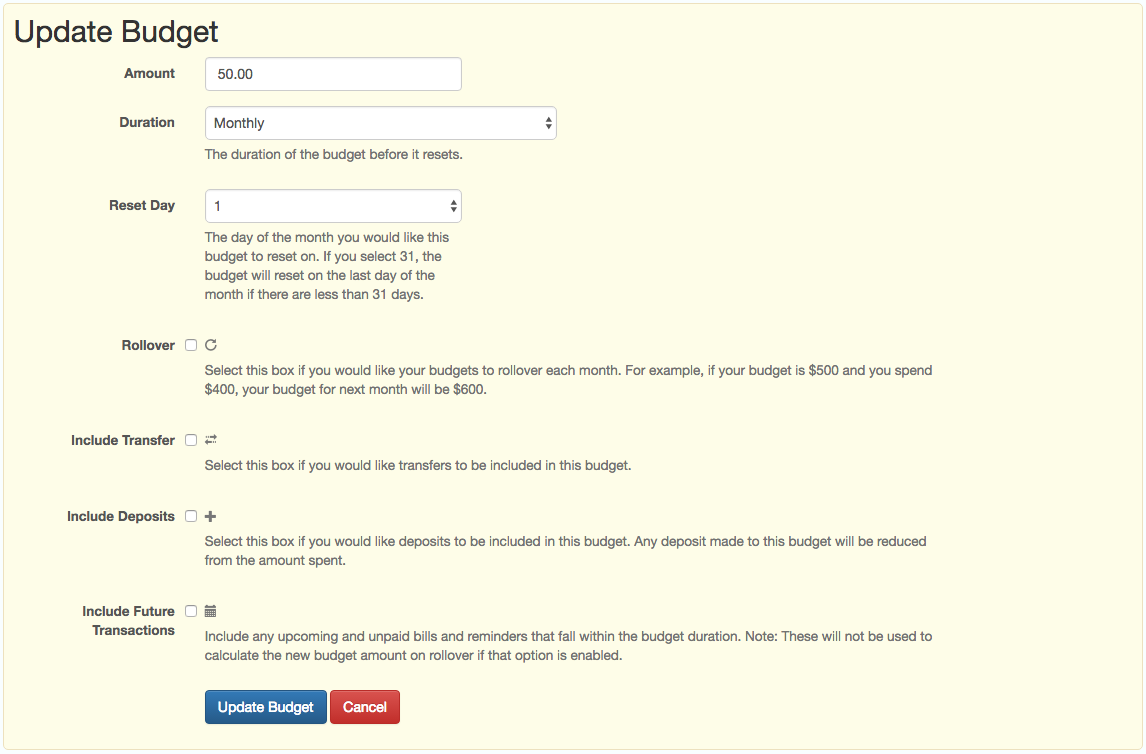Refinancing your loans can be a way to help reduce your monthly payments and help minimize the amount of interest you’ll pay over the life of the loan.
Whether you’re looking to refinance automotive, home or student loans, they each come with pros and cons. This ClearCheckbook Money Management Tips post will help you figure out if refinancing is right for you. Keep in mind that refinancing at the beginning of your loan while you’re still paying heavily toward interest is the best time to refinance. The closer you get to paying off your loan, the less a refinance might help.
The three most common types of loans you might have are automotive, student and home. Each of these loans has different requirements and fees associated with refinancing. We’ll cover each of these loan types and go into whether refinancing the loan might be right for you.
Why you might consider refinancing:
It might be wise to research refinancing your loans if you’ve match any of these criteria:
1. Your credit score has improved since taking the loan.
The interest rate you get on your loans usually has a very strong correlation to your credit score. If you took out a loan while your credit score was low (699 or below) but your credit score has raised up into the 700’s or higher, your chance of getting a lower interest rate is a lot higher than if your credit score was still low.
2. Interest rates have dropped since you took out the loan.
Interest rates have been at historic lows recently, but they fluctuate all the time. Assuming your credit score remained the same, refinancing when interest rates drop 1% or more from what you’re currently paying could mean a big reduction in monthly bills and interest over the term of the loan.
3. You didn’t get a good interest rate, even though you had good credit.
Just because you had good credit doesn’t mean you got the best rate when you took out your loan. Whatever the circumstances were, if you ended up with a higher rate than you think you can get now, refinancing at a lower rate could be a good choice.
4. Your financial situation has changed and you need to lower your monthly payment.
If you’ve run into some hard times financially and need access to as much cash as possible, then refinancing could potentially help get you some extra money each month.
5. You want to change your loan duration (eg: going from a 30 year fixed to a 15 year fixed mortgage).
Refinancing with a shorter term loan can help save you lots of money in interest over the term of the loan. If you’re financially stable enough and would like to pay off your home quicker, refinancing to a shorter loan term could be a good choice.
6. You’re currently facing hard times and need to reduce your monthly payments
Refinancing a loan doesn’t have to be entirely about saving money in the long term. Refinancing can also be a great option if you’re going through tough times financially and need to lower your monthly payments. This can usually be done by refinancing your loans for a longer duration. The downside is you’ll probably end up paying more over the course of the loan, but it can help alleviate any immediate financial issues. Then, when you get yourself back on solid ground you can work on refinancing again or paying off the loans faster.
How does refinancing a loan work?
No matter what kind of loan you have, refinancing works by taking out a new loan to pay off your old one. This new loan comes with a new interest rate and terms. You can refinance through your existing loan holder or with a different company. When refinancing, it’s always good to shop around and try to find a lender with the best rates and terms that fit your needs.
Automotive Loan Refinancing
Compared with other types of loans, refinancing an auto loan is about as easy as it gets. There is no appraisal and usually no fees associated with refinancing your auto loan. Credit unions usually offer some of the best interest rates when it comes to refinancing auto loans. The credit unions might require you to create a checking or savings account with them if you don’t already have one.
Assuming you meet one or more of the criteria above in the "Why you might consider refinancing" section, one of the first things you’ll want to do is get the current payoff amount from your existing lender. This is the amount left on your current loan and is the amount you’ll use when refinancing. If the payoff amount is higher than the value of your car then you might have trouble getting a new lender to refinance your loan.
You can find out how much you can potentially save by using a calculator like
Bankrate’s auto loan calculator to determine what your new monthly payment might be and then subtract that amount from what you’re currently paying each month.
Like we mentioned earlier, refinancing in the first half of your loan’s term is going to save you the most monty since during that time you’re mostly paying interest. After that you’ll be paying more toward principal and refinancing will have less of a benefit.
If you need to lower your monthly payment but your payoff amount is worth more than the value of your car or you can’t find a lender to give you a new loan at a lower interest rate, you can try negotiating with your current lender to lower the rate or to extend the term of the loan. Extending the duration of your loan means you’ll be paying more in interest over time but it could lower your monthly payments.
Student Loan Consolidation / Refinancing
Before we get into the details a little more, let’s clear up what the difference between consolidation and refinancing is. Student loan consolidation is combining multiple student loans into one single loan. This makes it easier to have one monthly payment at one interest rate instead of multiple loans at varying rates. Consolidation takes the weighted average of your interest rates to come up with the new rate. Student loan refinancing on the other hand works by taking one loan out to pay off all of your existing loans, leaving you with just one payment. Refinancing has the benefit of letting you seek out better interest rates and loan terms.
Student Loan Consolidation
Like we said above, consolidation simply takes all of your existing loans and consolidates them into one single loan using a weighted average of your interest rates to determine the new rate. Consolidation can be done with federal loans through a Direct Consolidation Loan. By doing this you’ll keep all the benefits of your federal loans and might be necessary for enrollment in federal programs such as income-based repayment plans. Another drawback is that you cannot consolidate private and federal loans into a single loan.
Consolidation won’t save you any money and could potentially cost you more in interest. Consolidation makes sense if you’re struggling to pay your minimum requirements each month and want to extend the terms of your loan. You might also become eligible for income-driven repayment plans where you pay less each month if you’re not making much money, but more once you start earning more.
Student Loan Refinancing
Refinancing is a way to take out a new private loan to pay off all your existing student loans. There is no federal loan refinancing program so you’ll have to use a private lender which means you might miss out on any federal loan benefits you might be receiving. Loan refinancing has the added benefit of letting you negotiate a lower interest rate and different repayment terms which has the potential to save you a lot of money in interest.
Refinancing makes sense if you’re looking to lower your interest rates or switch to different repayment terms. Just like other loans, the rates and terms you’ll get will depend on your credit score and current income.
Why you shouldn’t refinance or consolidate your loans:
If you’re currently part of a loan forgiveness program through your work, you might want to skip refinancing or consolidating your loans or else the forgiveness terms might start over. You should check with your workplace to find out what the terms are for your specific loan forgiveness program. Additionally, loan consolidation might lead to the loss of some borrower benefits, such as interest rate discounts, principal rebates, or loan cancellation benefits as a result of switching lenders.
Home Loan / Mortgage Refinancing
Being one of the biggest purchases you can make with one of the longest repayment terms, a home loan can have a dramatic effect on your finances. This makes home loans a great option for refinancing in order to save you money each month.
Like other loan refinancing, when you refinance a home loan you’re taking out a new loan to pay off your old one. There are many reasons you might consider refinancing your home loan and may include lowering your interest rate, shortening the loan term, switching from/to an adjustable rate mortgage (ARM), consolidating debt or taking equity out on your home (cash out).
The old rule for refinancing a home loan was when the interest rate was 2% lower than what you’re currently paying. Now, most lenders will advise you to refinance even if you can only save 1% on your interest rate.
Home loan refinancing has a few drawbacks to consider. First, refinancing a home loan often includes closing costs that can be 3-6% of your mortgage. Second, you might be required to have an appraisal, title search and pay for application fees. All of these can be combined into an amount called the "break even point" which will help you determine if refinancing is right for you. The break even point is calculated by dividing the total closing costs by the amount you’ll save each month. For example, if you refinance and have $3,000 in closing costs and save $100 per month, it will take you 30 months, or 2.5 years, to break even on the cost of refinancing. If you plan on staying in your home longer than that then refinancing is probably a good option.
Another thing to consider is the rate and term of the new loan. It’s possible that refinancing your existing 30 year loan to a new 30 year loan could cost you more in interest over the lifetime of the loan. This is less of an issue if you refinance early on, but looking at these numbers will also help you figure out if refinancing is right for you.
Depending on your current interest rate and what the going rates are for loans, you could potentially switch from a 30 year fixed rate mortgage to a 15 year fixed rate mortgage with a much lower interest rate but not pay much more per month. This is the best way to dramatically reduce the amount of interest you’ll pay over the lifetime of the loan.
Cash-out or home equity loans are a different type of refinancing where you take out a new loan for more than your existing loan amount. You can then use the difference in amounts for home improvements, college tuition or paying off other debts. Keep in mind that you’ll still be paying interest on this money so using a home equity loan to pay off something like credit card debt will still result in paying interest on that. Another potential issue is transferring from an unsecured to a secured debt. If you miss a payment on your credit card you’ll lower your credit score and get calls from debt collectors. If you miss payments on your mortgage you’re at risk of foreclosure and losing your home entirely.
How much can refinancing save me?
While there are too many variables at play to give you a straight answer, there are many calculators available online that can help you determine if refinancing one of your loans is right for you. Simply do an online search for "xxxx loan refinancing calculator" and you’ll find several different tools that can help you make the decision. Keep in mind that refinancing isn’t always about saving you the most money. If you’re going through tough times and are having trouble paying your minimum monthly payments, refinancing at a longer term can help dramatically reduce those monthly payments while you get yourself back into a stable financial position.
This is part of our weekly
Money Management Tips series that aims to help you take more control of your finances. This series gives tips on everything from tracking your spending to improving your credit score.


